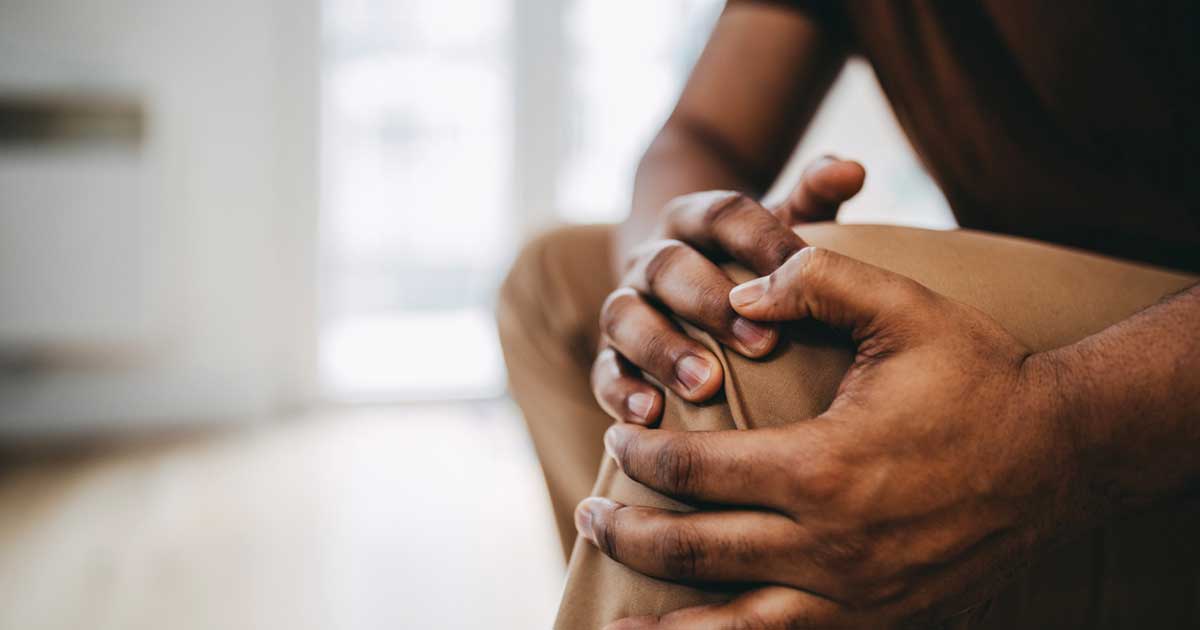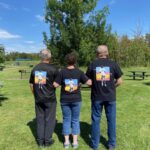Understanding “Good” vs. “Bad” Joint Pain, and When to See a Doctor

Pain is necessary for survival because it helps us heal, protects us, and tells us when something is wrong. However, it becomes a problem if it lingers for too long or causes us to stop moving. In fact, nearly half of Americans over the age of 50 experience such severe joint pain that negatively impact daily activities. Stanford researcher and physical therapist Corey Rovzar, PhD, DPT offers practical tips and some hope for those with chronic joint pain.
What is pain’s “working”?
The experience of pain begins with local tissue damage, such as from an injury or arthritis. This damage activates the nociceptor cells, which are sensory neurons that send “possible threat” signals to the spinal cord and the brain. The brain then interprets the stimulus as sensations such as hot or cold, achy or sharp. The brain also determines whether the stimulus is an actual threat and warrants an experience of pain. For example, if you have knee joint damage, the brain creates the sensation of pain to direct your attention to the knee so that you can address the “threat”. This process is called nociception.
Since pain is processed in the brain, research shows that lifestyle behaviors influencing brain health, such as how you eat, sleep, and think, can shape the way you experience pain. Therefore, Dr. As a means of assisting in the reduction of their pain, Rovzar counsels her patients to adopt healthier ways of life. Pain can also be exacerbated by local inflammatory mediators, known as cytokines. In the short term, these inflammatory mediators guide the body to clear our damaged tissues and promote healing. However, when they are present for too long, they may contribute to ongoing joint damage, stiffness, and pain.
Even if an injury has healed, the experience of pain can persist, a phenomenon known as phantom pain. This condition is more common when the brain remains in a state of protection and stress and offers evidence that pain levels are influenced by more than just tissue damage and cytokines.
“Because pain is processed in the brain, the experience of pain is subjective,” says Dr. Rovzar. “We can look at someone’s spine imaging and think, ‘This picture looks terrible,’ but they might not have any pain at all. Conversely, someone with mild changes in the spine might be experiencing a lot of pain.”
How to Tell the Difference Between Pain That Is “Good” and “Bad” Whether you exercise on the weekends or train like a professional athlete, it’s important to know the difference between “good” pain that signals muscle growth and “bad” pain that may indicate harm.
“Good” Pain:
“Good” pain is generally described as dull, sore, or achy muscle discomfort during or following exercise. This pain typically reduces after stretching, soft tissue massage (e.g. foam rolling), and/or applying heat, and gradually subsides over the course of a few days.
It is normal to experience some pain and stiffness 24 to 48 hours after a workout when beginning a new training routine. DOMS, or delayed onset muscle soreness, is the name given to this occurrence. These symptoms are signs that you’re challenging your body appropriately and building muscle strength and endurance. Because stronger muscles are able to carry more of the load of our movements, reducing the strain on our joints, increased muscle mass frequently results in less joint pain.
“Bad” Pain:
“Bad” pain is described as sharp, stabbing, electric, or throbbing. In most cases, it comes on suddenly or during particular movements. “Bad” pain is more commonly felt in joints, bones, and tendons. Be aware of new “popping” or “clicking” sensations that appear suddenly with pain. Long-standing, painless clicking or cracking, however, is generally not a cause for concern.
If you experience these symptoms, stop the activity and rest, as they may signal injury or overuse. If the pain persists or worsens, consult a medical provider.
When to See a Doctor for Joint Pain
If you have any of the following symptoms: Pain is sharp, sudden, or intense, or accompanied by fever, nausea, swelling, warmth, or redness.
Pain occurs after a physical trauma or is associated with weakness or numbness.
longer than one to two weeks, gets worse over time, or keeps you from sleeping. When in doubt, consult your primary care physician or a local urgent care facility for their expert opinion.
According to Dr., “I definitely send them to see an orthopedist to rule out something major if someone has an acute injury and hasn’t had imaging.” Rovzar.
Overcoming the Fear of Pain
Pain is not always a sign of damage. Understanding your pain, tracking it over time, and safely staying active can be key parts of long-term relief from joint pain.
As medicine continues to evolve, so do the treatments for pain. The way we deal with pain has changed thanks to various non-surgical treatments like local nerve blocks and injections into joints. Also, strong evidence is emerging that supports the use of lifestyle treatments, which not only offer benefits for pain but can also enhance overall health and quality of life.




